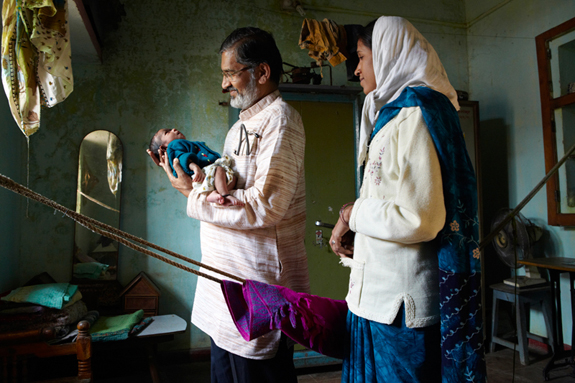Can a Village Revolution for Mothers and Newborns Go Global?

By Carolyn Miles, Save the Children
NOTE: This blog was originally published in HuffPost Impact.
Fifteen years have passed since a husband and wife team in western India challenged the notion that the deaths of thousands of mothers and millions of babies during pregnancy and childbirth are inevitable in poor and remote communities.
Drs. Abhay and Rani Bang trained a battalion of local women to deliver lifesaving care to mothers and newborns who had little access to doctors or hospitals. Their paper published in 1999 in the prestigious medical journal, The Lancet, recorded that the interventions delivered by these community-based health workers led to a 62 percent reduction in newborn mortality in only three years. Since then, more evidence has been generated suggesting that up to 75 percent of maternal and newborn deaths are preventable -- most without intensive care.
Today babies in some of the world's poorest, most remote communities are being saved through the use of low-tech interventions, such as a low-cost, hand-held device that can resuscitate babies who are not breathing at birth or an antiseptic gel that can prevent deadly infections when applied to the umbilical cord immediately after birth.
These interventions -- and a number of others -- have the potential of saving 1.9 million newborns and 158,000 mothers a year, while also averting 800,000 stillbirths, according to the latest estimates published in The Lancet last month. But the problem is this: So far no country in Africa or South Asia -- where 80 percent of maternal and newborn deaths take place -- has succeeded in delivering these high-impact, cost-effective interventions nationwide. Yet, based on the work of the Bangs and others, we know that these lives CAN be saved.
Without these interventions reaching every woman and every newborn, many deaths happen needlessly each year. But that may be about to change.
In May, when the World Health Assembly met in Geneva, health ministers from around the world took the historic step of making maternal and newborn health and stillbirths a top global health priority. The health ministers approved the Every Newborn Action Plan (ENAP), a roadmap to help countries sharpen their plans to reduce stillbirths and maternal and newborn deaths.
Even more importantly, many countries, including India, Bangladesh, Nepal, Ethiopia, Uganda and Malawi have already taken steps to change health policies that will help ensure that proven newborn interventions are made more widely available. In Ethiopia and India, for example, trained personnel at community health posts are now allowed to use injectable antibiotics to treat severe newborn infections when a hospital referral is not possible. In both countries severe infections are among the leading killers of newborns.
Increasing access and use of such interventions, especially for those that have not been reached, will help ensure that the reductions in newborn mortality start to catch up with great global declines we've already seen in deaths to children after the first month of life. Currently, babies who die within the first month of life account for almost half (44 percent) of all deaths of children under age 5.
On Monday, ENAP was launched with great fanfare in Johannesburg, with many notables and agencies including Save the Children joining in a global call to action.
Hopefully, this will mark the beginning of one of the world's greatest health crusades in history -- ending preventable deaths of mothers and newborns and stillbirths within our own lifetime.

